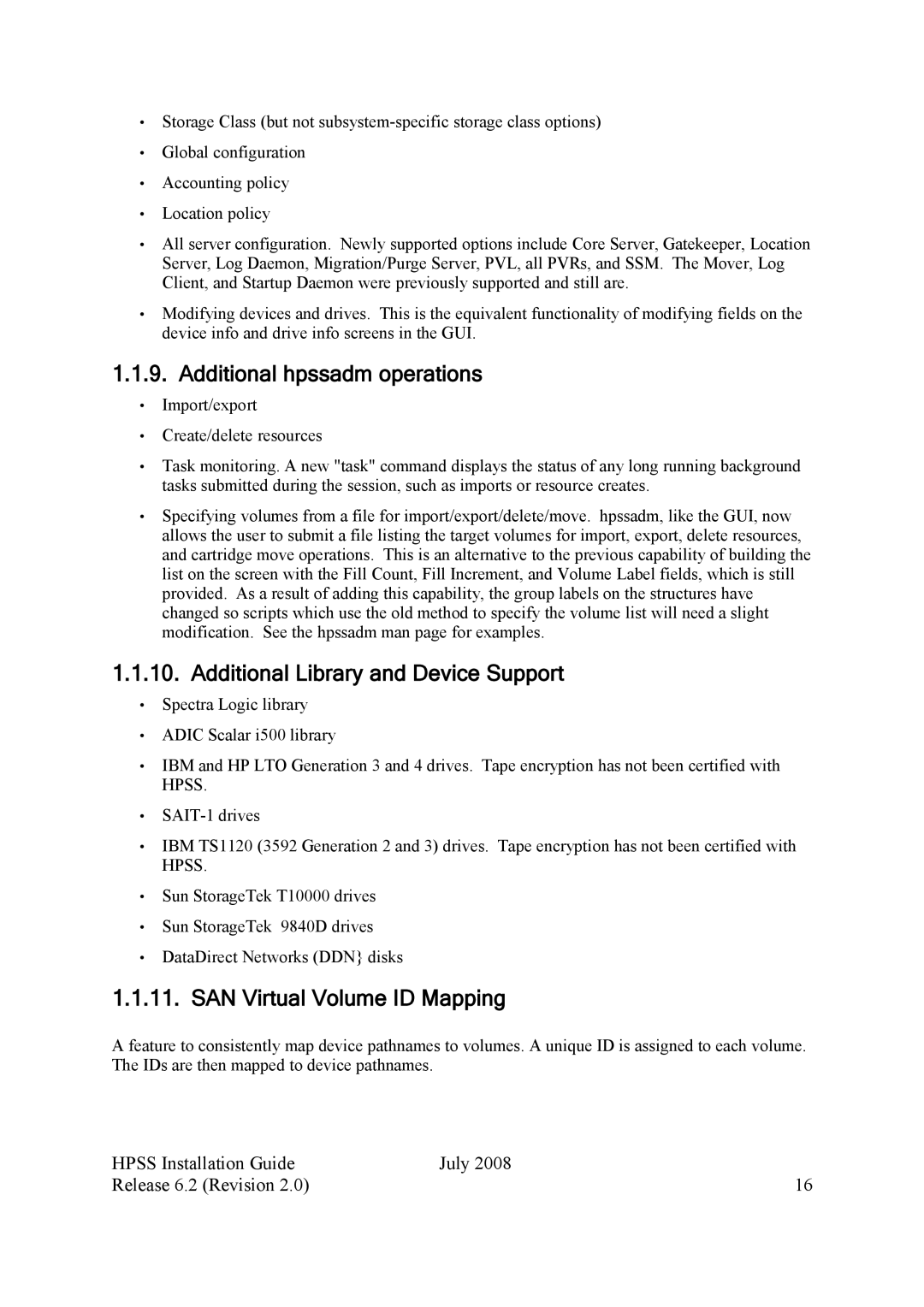•Storage Class (but not
•Global configuration
•Accounting policy
•Location policy
•All server configuration. Newly supported options include Core Server, Gatekeeper, Location Server, Log Daemon, Migration/Purge Server, PVL, all PVRs, and SSM. The Mover, Log Client, and Startup Daemon were previously supported and still are.
•Modifying devices and drives. This is the equivalent functionality of modifying fields on the device info and drive info screens in the GUI.
1.1.9. Additional hpssadm operations
•Import/export
•Create/delete resources
•Task monitoring. A new "task" command displays the status of any long running background tasks submitted during the session, such as imports or resource creates.
•Specifying volumes from a file for import/export/delete/move. hpssadm, like the GUI, now allows the user to submit a file listing the target volumes for import, export, delete resources, and cartridge move operations. This is an alternative to the previous capability of building the list on the screen with the Fill Count, Fill Increment, and Volume Label fields, which is still provided. As a result of adding this capability, the group labels on the structures have changed so scripts which use the old method to specify the volume list will need a slight modification. See the hpssadm man page for examples.
1.1.10. Additional Library and Device Support
•Spectra Logic library
•ADIC Scalar i500 library
•IBM and HP LTO Generation 3 and 4 drives. Tape encryption has not been certified with HPSS.
•
•IBM TS1120 (3592 Generation 2 and 3) drives. Tape encryption has not been certified with HPSS.
•Sun StorageTek T10000 drives
•Sun StorageTek 9840D drives
•DataDirect Networks (DDN} disks
1.1.11. SAN Virtual Volume ID Mapping
A feature to consistently map device pathnames to volumes. A unique ID is assigned to each volume. The IDs are then mapped to device pathnames.
HPSS Installation Guide | July 2008 |
Release 6.2 (Revision 2.0) | 16 |
